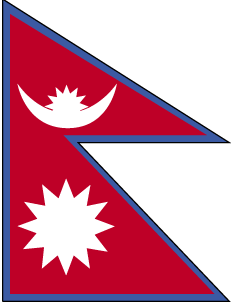
Nepal...
Stats...
Overview:
In 1951, the Nepalese monarch ended the century-old system of rule by
hereditary premiers and instituted a cabinet system of government. Reforms
in 1990 established a multiparty democracy within the framework of a
constitutional monarchy. A Maoist insurgency, launched in 1996, has gained
traction and is threatening to bring down the regime, especially after a
negotiated cease-fire between the Maoists and government forces broke down
in August 2003. In 2001, the crown prince massacred ten members of the
royal family, including the king and queen, and then took his own life. In
October 2002, the new king dismissed the prime minister and his cabinet for
"incompetence" after they dissolved the parliament and were subsequently
unable to hold elections because of the ongoing insurgency. While stopping
short of reestablishing parliament, the king in June 2004 reinstated the most
recently elected prime minister who formed a four-party coalition
government, which the king subsequently tasked with paving the way for
elections to be held in spring of 2005. Citing dissatisfaction with the
government's lack of progress in addressing the Maoist insurgency, the king in
February 2005 dissolved the government and assumed power.
Population: 27,676,547
Location:
Southern Asia, between China and India
Map references:
Asia
Area:
Total Area: 140,800 sq km
Land Area: 136,800 sq km
Comparative Area: slightly larger than Arkansas
Capital:
Kathmandu
National holiday:
Birthday of King GYANENDRA, 7 July (1946)
More Nepal Facts...
More Tips on Travelling to Nepal...
Overview:
In 1951, the Nepalese monarch ended the century-old system of rule by
hereditary premiers and instituted a cabinet system of government. Reforms
in 1990 established a multiparty democracy within the framework of a
constitutional monarchy. A Maoist insurgency, launched in 1996, has gained
traction and is threatening to bring down the regime, especially after a
negotiated cease-fire between the Maoists and government forces broke down
in August 2003. In 2001, the crown prince massacred ten members of the
royal family, including the king and queen, and then took his own life. In
October 2002, the new king dismissed the prime minister and his cabinet for
"incompetence" after they dissolved the parliament and were subsequently
unable to hold elections because of the ongoing insurgency. While stopping
short of reestablishing parliament, the king in June 2004 reinstated the most
recently elected prime minister who formed a four-party coalition
government, which the king subsequently tasked with paving the way for
elections to be held in spring of 2005. Citing dissatisfaction with the
government's lack of progress in addressing the Maoist insurgency, the king in
February 2005 dissolved the government and assumed power.
Population: 27,676,547
Location:
Southern Asia, between China and India
Map references:
Asia
Area:
Total Area: 140,800 sq km
Land Area: 136,800 sq km
Comparative Area: slightly larger than Arkansas
Capital:
Kathmandu
National holiday:
Birthday of King GYANENDRA, 7 July (1946)
More Nepal Facts...
More Tips on Travelling to Nepal...